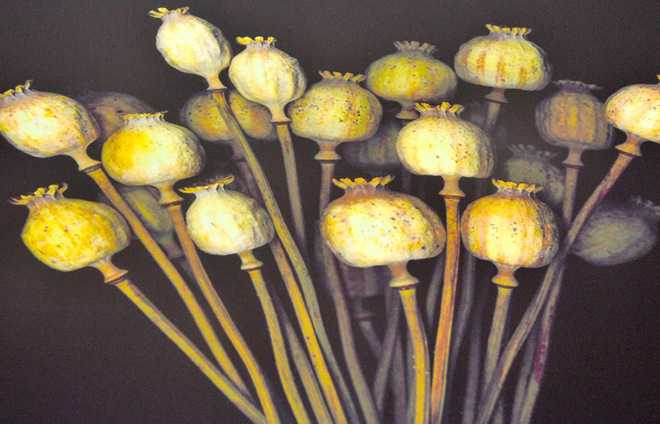Preeti Verma Lal
The joy plant. God’s own medicine. Stones of immortality. A plant — rather its latex — so ancient and so potent — that nations waged wars, territories were annexed and history was written and rewritten for the joy plant. That’s opium, a pretty flower holding an addictive sap in its pod that has been in use since nearly 3400 BC. Said to have been first cultivated by the Sumerians in lower Mesopotamia (Southwest Asia), the plant was passed on to the Assyrians, who passed the baton to the Egyptians. In 330 BC, Alexander the Great is said to have introduced opium to the people of Persia and India. Soon, India and China became synonymous with opium.
In Thailand’s Hall of Opium, located in the heart of Chiang Rai’s Golden Triangle where the tips of Thailand, Laos and Myanmar meet at the confluence of the Ruak and Mekong rivers, a dark tunnel carved into a mountain and accessible only through a 137-metre cave entrance draws the visitor into the opium realm with the agonised faces of addicts staring from the wall. In the tunnel, the opium is depicted as a demon that lures with euphoria and later destroys everyone.
It is through history that one learns of opium as a precious commercial commodity. Wanting silk and tea from China but no longer ready to pay in silver, Britain sought to fix the imbalance by trading with the opium it was getting from India. In the beginning, the Chinese mixed it with tobacco and then switched to smoking pure opium. Opium dens became a rage and addicts countless. Not surprisingly, countries sparred over opium monopoly, which eventually led to the Opium Wars between China and Britain, and later other western powers.
India figures prominently in the Hall of Opium, the timeline beginning with Alexander the Great and moving forward to 1606 when ships were instructed to purchase the finest Indian opium and transport it back to England. In 1750, the British East India Company assumed control of Bengal and Bihar and British shipping dominated the opium trade out of Calcutta to China. In less than two decades, British East India Company’s import of opium to China reached a staggering 2,000 chests of opium per year. Before the 18th century drew to a close, British East India Company had established a monopoly on the opium trade.
Not far from the Hall of Opium is a small opium museum which narrates legends about how the first opium plant was born out of the genitals of an old woman (the tobacco rose from her breasts); how 15 cm porcelain opium pillow “keep smoker’s head firmly soft and comfortably cool, and although they are very hard, after smoking a few pipes of opium, the smoker feels as though his head were resting on a cloud”; and the most satisfying opium smoking position being “heel-against-buttocks”.
Behind glass panes are wads of tobacco, ancient opium measuring weights, intricately carved opium pipes and wax dioramas that warn people of the evil called opium. In his book, the Confessions of an English Opium Eater, author Thomas de Quincy, splits the chapters into the Pleasures of Opium, Introduction to the Pains of Opium, and Pains of Opium that end with insomnia, nightmares, frightening visions, and difficult physical symptoms.
In Thailand’s Golden Triangle, the story of opium follows the same trajectory: the pleasure and the pain of the opiate that devastated countless addicts and rewrote world history.
Unlock Exclusive Insights with The Tribune Premium
Take your experience further with Premium access.
Thought-provoking Opinions, Expert Analysis, In-depth Insights and other Member Only Benefits
Already a Member? Sign In Now










